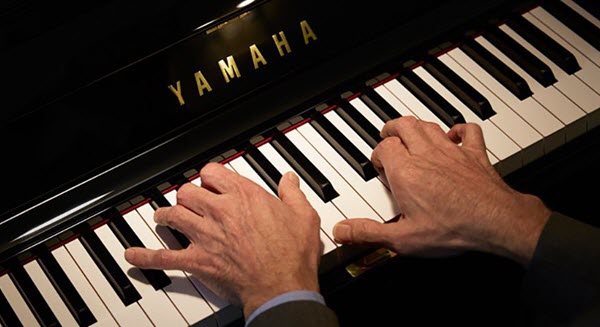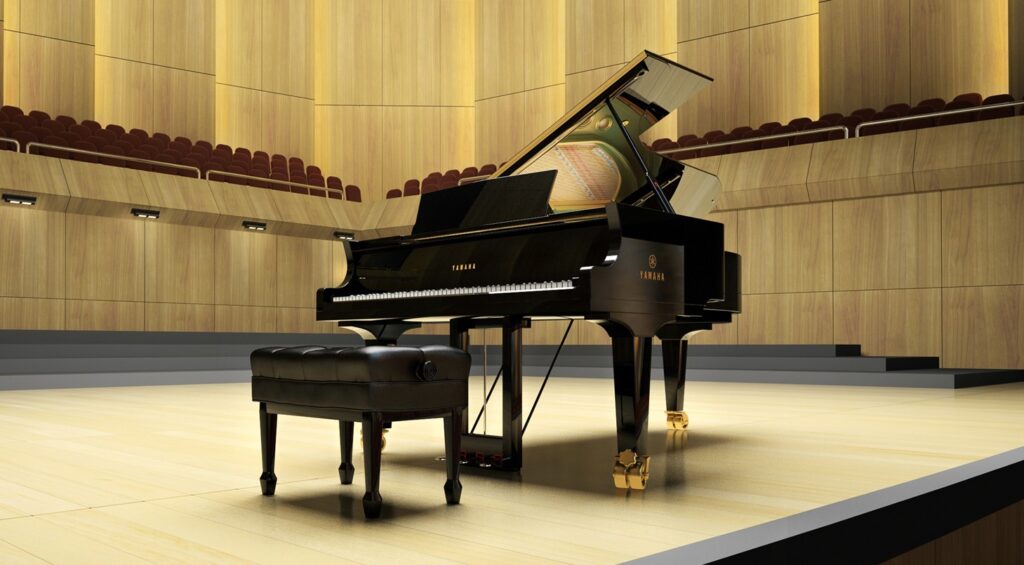History Of The Organ
A remarkable keyboard that’s had a major impact on music across the ages.
There are few musical instruments that have had as long a path of continual development as the organ. In fact, no other keyboard has had such a major impact on music across the ages — and it remains as popular as ever.
Here’s a look at the history of this remarkable instrument.
Pipe Organs
Incredibly, the organ dates all the way back to the 3rd century, credited to the Greek inventor Ctesibius of Alexandria, who first came up with the concept of moving air through a tuned pipe to produce a note. The earliest pipe organs could only play one note at a time and used water (either naturally falling from a waterfall, or manually pumped) to blow air into the tube.
In the 6th century, the Romans invented the bellows, a manual pump mechanism for forcing air — an innovation that had a huge impact on the development of the organ since it enabled air to be selectively sent to multiple pipes under the control of a keyboard, allowing several notes at a time to be played. The instrument was first brought to Western Europe sometime in the 7th century, where it was used for public performance and other secular purposes.
At around this time, the organ began developing in mechanical complexity, with pitch determined by the length and diameter of the pipe (one for each key on the keyboard), and tonal quality becoming a function of the material used to craft the pipe and other design characteristics.
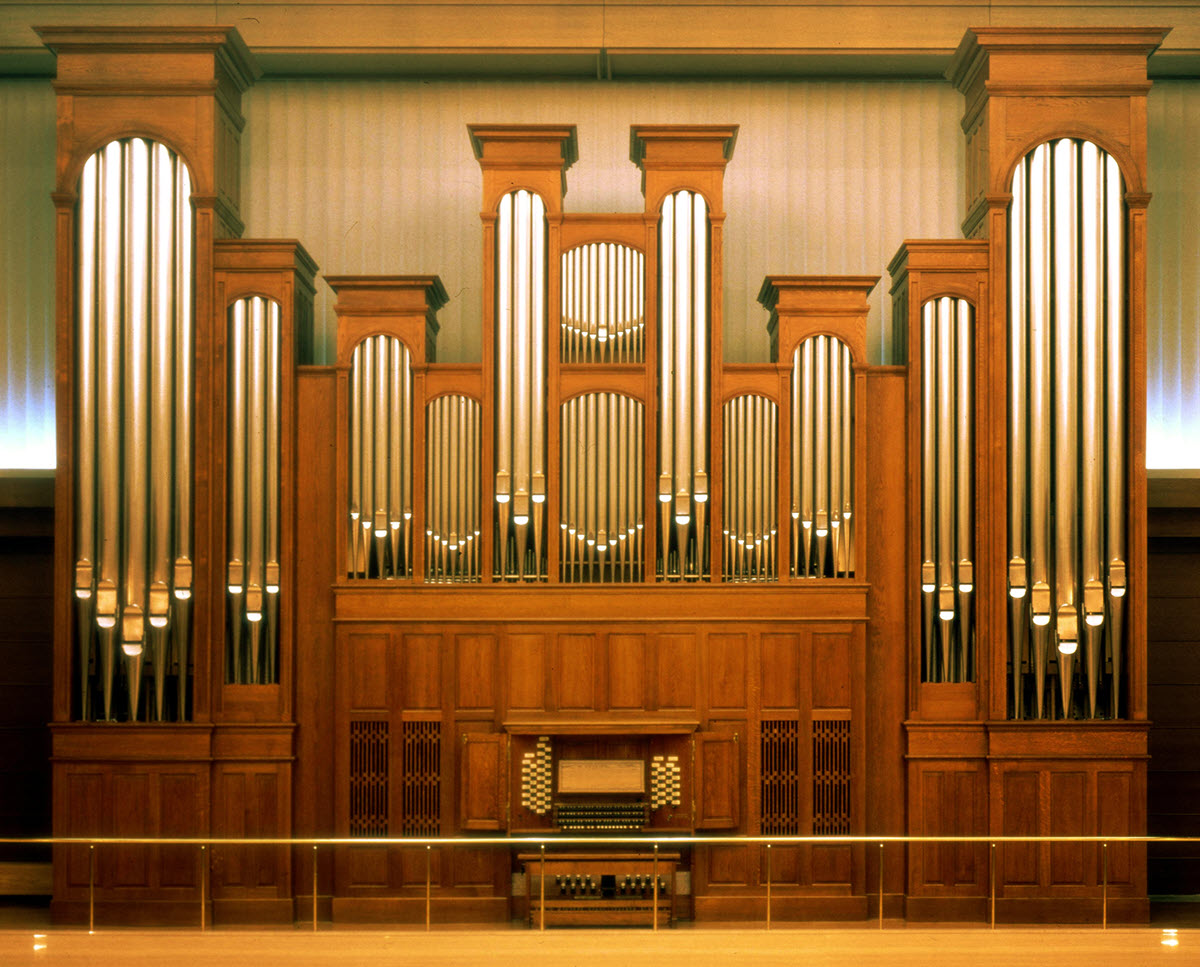
The use of the pipe organ in churches soon became commonplace. By the 10th century there was a report of a large organ installed in a cathedral in Windsor, England had 400 pipes, 26 bellows and two keyboards of 40 keys each — and required 70 men to operate!
The introduction of stops (groups of pipes, each of which produces a different timbre) in the mid-15th century was a major innovation. It allowed the player to selectively choose sounds and sound combinations and also provided the ability to play softer and louder, making the pipe organ much more versatile.
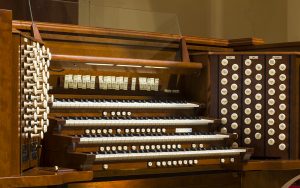
The invention of bass pedals — low notes that could be played by the feet — first appeared during the 16th century.
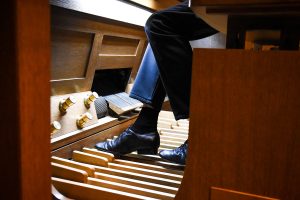
At around the turn of the 20th century, massive pipe organs called theatre organs began appearing. Designed to accompany silent films and live shows, they offered a wide range of timbres, many going far beyond what one would expect from an organ, including celeste, sleigh bells, wood blocks and manual percussion like cymbals.
Enjoy this collection of pipe organ music to get a sense of the majesty and beauty of the instrument, and click here for more information about its construction.
Smaller Organs
At the same time that organs were becoming massive installations that could only fit in large cathedrals, another trend began: smaller instruments that enabled organ music to be brought into social settings. The portative organ, for example, could be slung over the shoulder, or held in the lap and played with one hand, while the other hand operated bellows that drove air through small pipes. The positive organ was somewhat larger, but still manageable enough to be wheeled into various locations for performances. These types of instruments tended to only have a few stops and a smaller number of keys.
During the Renaissance and Baroque periods, the tonal palette of organs grew extensively, with more differentiation based on the country of development. In addition, new features were developed, further extending the musicality of the pipe organ. One example was the swell pedal (also called the swell box), first introduced in 1712. It operated by opening and closing louvers on a box or room that contained a rank of pipes, changing the sound from muffled to fully open. This was followed by the crescendo pedal, which enabled the gradual addition of more ranks and stops, allowing for real-time dynamic expression.
Reed Organs
Another variant of the smaller organ design was the reed organ (also called the “pump” organ), which became popular in the late 1800s. Unlike pipe organs, the reed organ was quite dynamic, with changes in the air pressure blown across a vibrating reed serving to increase and decrease the instrument’s volume. Interestingly, this was the first type of instrument that Yamaha founder Torakusu Yamaha worked on; he would later develop his own model, which introduced various improvements that made tuning more reliable. In 1897 he founded Nippon Gakki Company (Japan Musical Instrument Company) and started producing portable reed organs.

In 1935, Yamaha introduced the Magna Organ, which was an electrically blown reed organ with pickups to help amplify the sound.
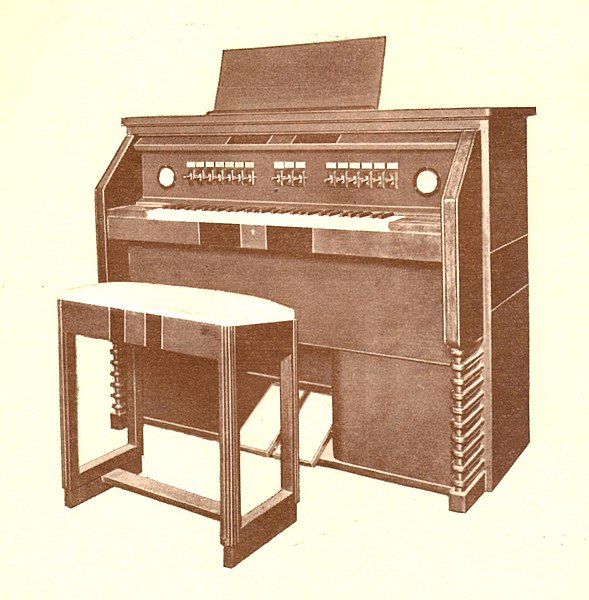
Tonewheel Organs
The next big breakthrough in organ design came with the “tonewheel” organ, first developed by Hammond in 1935, then refined until the release of the company’s iconic and best-selling B-3 model in 1955. Based on a series of spinning magnetic wheels that excite transducers, each wheel produces signals of varying frequency to create a simple sine wave-based tone for each key. A total of 96 tonewheels are used to create nine harmonics, with the level of each controlled by sliders above the keys called drawbars.
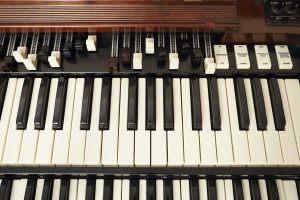
Tonewheel organs (sometimes called “drawbar organs”) are electrically powered, and their volume is controlled by a foot pedal. Other aspects of the design include a chorus/vibrato circuit to produce timbral and pitch animation, percussion to add a transient attack to each note, and the common use of an external rotating speaker system called a Leslie to further animate the sound.
This hugely influential keyboard set the standard for non-pipe organs, and remains popular in gospel, jazz, rock and other genres of music. This playlist showcases some of the many artists who play the instrument.
It’s worth noting that the advance of technology in the 1980s allowed companies to begin emulating the classic tonewheel sound of the Hammond B-3 with the use of analog, and later digital chips, followed by modern sampling and DSP (Digital Signal Processing) methods. These instruments are sometimes called “clonewheels,” a punny title that refers to their copycat nature. The original Korg CX3 released in 1980 was an analog design, as were the Crumar Organizer and T Series. The Roland VK-7 (1997) was the first clonewheel to utilize modeling to recreate the tonewheel sound. Nord (a brand of the Swedish company Clavia) took the same approach in their Electro Series, first introduced in 2001, as did Italian companies Crumar and Viscount. Not to be left out, Hammond (now Hammond-Suzuki) released their own range of clonewheel organs like the XB Series, as well as the current XK and SK Series.
Electronic Organs
Allen Organ released the first fully electronic organ in 1939, using vacuum tubes. This design concept would soon be adopted by other manufacturers, who offered it in large-format console, small spinet and other configurations. Many of these offered features like bass pedals and auto-chord accompaniment features, including drum rhythms. The first Yamaha electronic organ was a spinet model called the D-1, released under the company’s Electone brand in 1959.

Electronic organs were followed by simpler types of home organs called chord organs. These used buttons on the left side to sound full chords, making them easier to be played by novices and children. The first was made by Hammond in 1959, but the most popular and prolific range was the Magnus Chord Organ.
So-called “hybrid” organs combined transistor circuits for sound production, coupled with tube-based amplification systems. Gulbransen was the first company to release such a design in 1957, using it for their line of theatre organs. Rodgers followed in 1958, with their first fully transistorized pipe organ unveiled in 1962.
Combo Organs
With the rise of rock and roll in the 1960s, the need for smaller portable organs that could be played onstage became apparent. Into that void came some classic instruments that are still being emulated today. The two most popular brands were Vox, from the UK, and Farfisa from Italy. The Vox Continental appeared first (in 1962), and was adopted by many of the top artists of the day. These classic songs all featured the Vox organ.
Farfisa responded with the Combo Compact in 1964, followed by subsequent models, also used by many iconic bands of the era. These ’60s and ’70s hits all featured the Farfisa combo organ.
Other companies soon entered this burgeoning market, including Gibson (actually just rebranded Lowrey combo organs), Ace Tone (built by Roland founder Ikuhiro Kakehashi) and Yamaha, with models such as the YC-10 (1969), YC-30 (1969), YC-20 (1970) and YC-45D (1971).
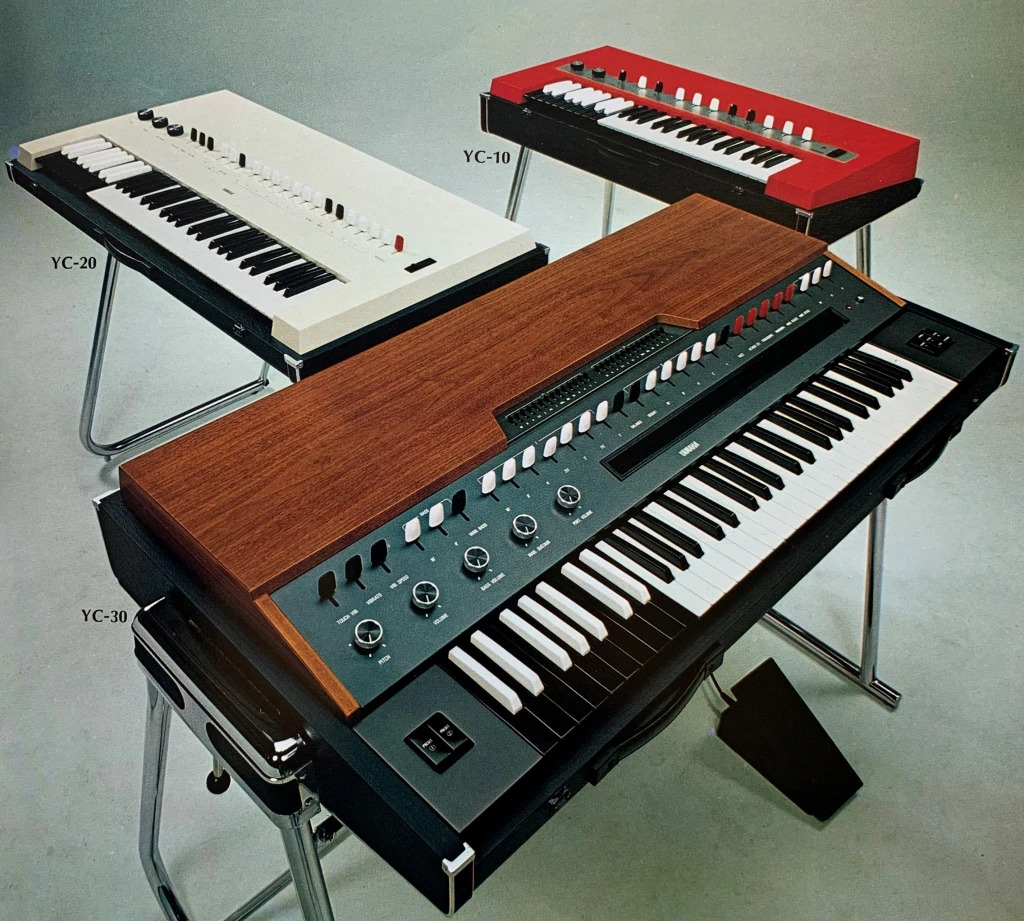
Digital Pipe Organs
By the mid-20th century, electronics began replacing wind-driven pipes. In 1969, Allen Organ started development on the first all-digital pipe organ, which utilized sampling (digitized recordings of an instrument) for the first time to reproduce the sound. The Allen Computer Organ was released in 1971. The Dutch company Johannus started making sample-based digital organs in 1987, followed by Rodgers in 1990. These kinds of instruments continue to be produced today for church and home.
The Role of the Organ in Current Yamaha Keyboards
In recognition of the continued importance organ plays in music, all current Yamaha electronic keyboards offer dozens (or, in some cases, even hundreds) of organ sounds. For example …
YC Series Stage Keyboards
Yamaha YC Series Stage Keyboards utilize the company’s proprietary Virtual Circuit Modeling to recreate the sound and behavior of vintage organs with incredible detail, offering three variations: a pristine clean tone, a sonically rich classic, and a road-worn example. They also offer FM technology for a unique take on the organ sound.
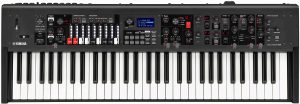
YC Series keyboards are designed specifically for live performance, with physical drawbars and dedicated switches for percussion, chorus-vibrato and rotating speaker speed, thus providing the kinds of realtime hands-on control organists are used to.
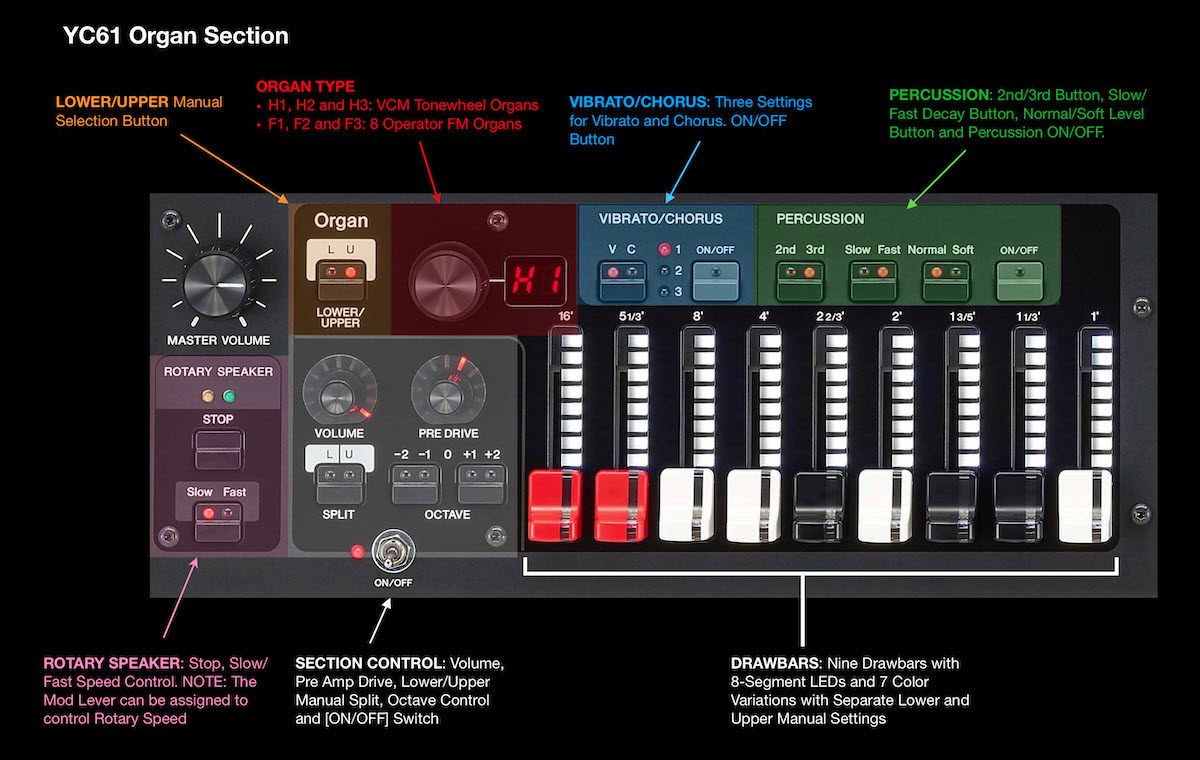
The YC61 model even has a “waterfall” keyboard, with keys that have flat fronts and a slightly radiused edge for extremely organ-like feel and performance.

reface YC
The Yamaha reface YC is an ultra-portable keyboard that offers sampled renditions of five of the most-used organ types:
- Classic vintage drawbar
- British transistor combo
- Italian combo
- Japanese transistor combo
- Yamaha YC-45D combo

Each has authentic drawbar tones, percussion and other characteristics for period-accurate performance. Enjoy these demos of the YC in action.
MONTAGE and MODX+ Synthesizers
Ever since the days of the GX-1 (the progenitor to all modern Yamaha synthesizers), Yamaha synths have included organ sounds. The same is true of today’s Yamaha MODX+ and flagship MONTAGE M synthesizers, both of which utilize sampled (AWM2) and advanced FM (frequency modulation) technologies to deliver dozens of incredibly rich vintage organ recreations, enhanced by realistic modeled chorus/vibrato and rotating speaker simulations. Listen to the MODX’s drawbar organs and pipe organs, which are the same as are found in MONTAGE.

Genos
Yamaha Arranger keyboards offer an expanded range of sampled organ sounds, with many pipe and drawbar variations, along with classic theatre organ and combo organ sounds. The Yamaha Genos, for example, offers over 80 sampled and modeled organ tones, including tonewheel organs with accurate rotating speaker effects, as well as pipe organs, theatre organs and combo organs. Listen to the Genos pipe organ sounds in action.

Though it’s been around for more than 18 centuries, the sound of the mighty organ still continues to play a big role in the music being made today — a true classic if ever there was one.










